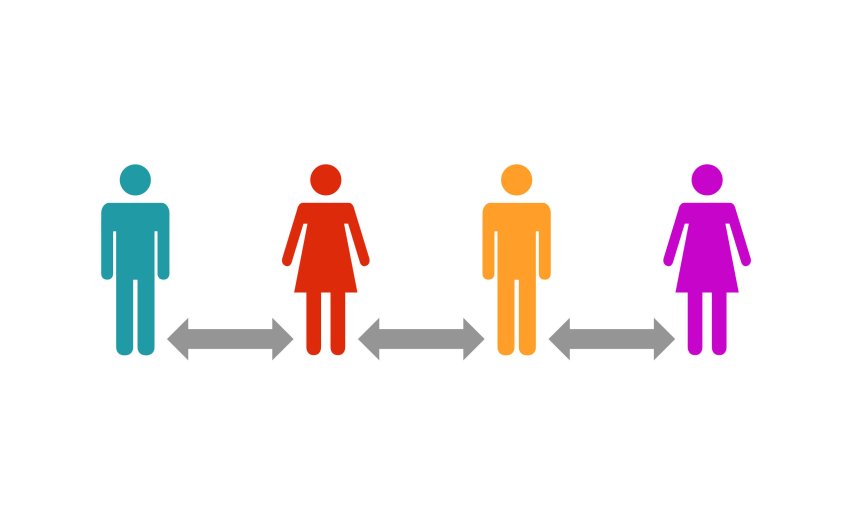We all are now well aware of the word Corona virus or COVID-19. The reason this name is given to this virus is its structure- like a crown. Anyhow, by now you all might have heard or read about a whole lot of information about this pandemic. It all started in a meat market in Wuhan, China. The first ever case which was reported to WHO was on 31st December, 2019, as pneumonia of unknown cause. Since then a whole lot of information is there. The outbreak which started in China was declared as a Public Health Emergency of International Concern on January 30, 2020. The name for this new coronavirus disease was announced on 11th February, 2020 as COVID-19 which in simple terms is Corona virus disease-2019. Then observing its spread throughout the globe, WHO characterized this disease as pandemic on 11th March, 2020.
After the declaration of this disease as a pandemic, every nation is on their toes to halt its spread. Various preventive strategies have been advised for all human beings across the globe. The most significant and the attention catching term is “Social distancing.” Every citizen across all the nations has now heard this term. But what actually social distancing is? Very few in actual form have been able to understand.
Social distancing means avoiding/ decreasing contact between those who are infected or possibly infected with a disease causing pathogen & those who are not, so as to stop or slow down the rate & extent of disease transmission in the community. Now the question arises why it is important, especially during this pandemic. To find answer to this question, we must look into the details of this infection.
Coronavirus disease or covid-19 is an infectious disease caused by a newly discovered coronavirus. This new disease or virus were unknown before the outbreak began in Wuhan, China. The most common symptoms include- fever, tiredness & dry cough. Some may also have aches & pains, nasal congestion, runny nose, sore throat or diarrhea. These symptoms are usually mild and begin gradually. Some people become infected but don’t develop any symptoms and don't feel unwell. Most people (about 80%) recover from the disease without needing special treatment. Around 1 out of every 6 people who gets COVID-19 becomes seriously ill and develops difficulty breathing. Older people, and those with underlying medical problems like high blood pressure, heart problems or diabetes, are more likely to develop serious illness. People with fever, cough and difficulty breathing should seek medical attention.
People can catch COVID-19 from others who have the virus. The disease can spread from person to person through small droplets from the nose or mouth which are spread when a person with COVID-19 coughs or exhales. These droplets land on objects and surfaces around the person. Other people then catch COVID-19 by touching these objects or surfaces, then touching their eyes, nose or mouth. People can also catch COVID-19 if they breathe in droplets from a person with COVID-19 who coughs out or exhales droplets. This is why it is important to stay more than 1 meter (3 feet) away from a person who is sick. Studies to date suggest that the virus that causes COVID-19 is mainly transmitted through contact with respiratory droplets rather than through the air. Older persons and persons with pre-existing medical conditions (such as high blood pressure, heart disease, lung disease, cancer or diabetes) appear to develop serious illness more often than others.
The mode of transmission i.e. contact transmission is the major reason that all around the world in all nations, people are advised to follow social distancing. But what I have seen around or in the media reports, people are not able to grasp the concept of social distancing.
Almost all the countries in the world are under lockdown, governments of all nations trying hard to make sure that social distancing is being followed. At some places fines and punishments are also imposed to inhibit movement of their citizens.
The major problem is that people are not taking it seriously or they don’t have the appropriate information about the prevention of disease or how to break the chain of transmission. The public health system of the countries are not able to make people understand.
Social distancing in simple terms means that people have to stop gathering at public places, places of worship, dining halls, beaches, market, playground. The major issue is that the incubation period of this virus ranges from 14-28 days which means that after a person has contracted infection, it may take 14-28 days to exhibit symptoms. You might not know who is infected and at public gatherings, you don’t know where the virus is, you may touch the surfaces, door knobs, lift surfaces from where you can contract infection and you can come home and give infection to other members in family. When you go out next time, you will be infecting more people & the infection goes on.
In my locality, you can see many people going out during the curfew relaxation from 5-8 am in the morning and gathering at grocery stores, pharmacies, vegetable markets, as if the virus will not be there during that hour. Children playing outside their homes, people visiting their neighbours. They think that they are invincible but they are not. On the other hand we are the same people who will be blaming the governments or the health systems when this invisible threat will become visible that they didn’t do anything to control. So the time to act is now.
Social distancing may help to reduce the burden on our health systems, flattening the curve so that our health officials don’t have to choose between who can live & die. The simple things we can do is-
- Avoid going out until necessary
- Avoid meeting friends, neighbours. We can keep in touch through video calls, chats. There are various ways to keep us connected.
- Don’t go to any religious & social gatherings.
- While going out, maintain at least one metre distance from the fellow person.
- Follow the guidelines given by health departments.
- Don’t create panic & don’t forward fake messages & videos.
- Don’t hoard the essentials. Take only what is required for you and your family.
- Engage your children in indoor games.
- Take this opportunity to take care of yourself.
- Follow a routine, get dressed, do your work, call your family & friends.
- Read books, indulge in your hobbies. You may not get time later.
These are testing times for everyone & we can make a small contribution by staying at home. First health is important, then come everything else. To overcome this crisis, we all need to be strong physically & mentally also. Let’s fight this together but maintaining the distance.
*Sources- World Health Organization, Ministry of Health & Family Welfare Government of India.
Corresponding Author
Ms. Jasneet Kaur Dhaliwal
Assistant Professor, Community Health Nursing

